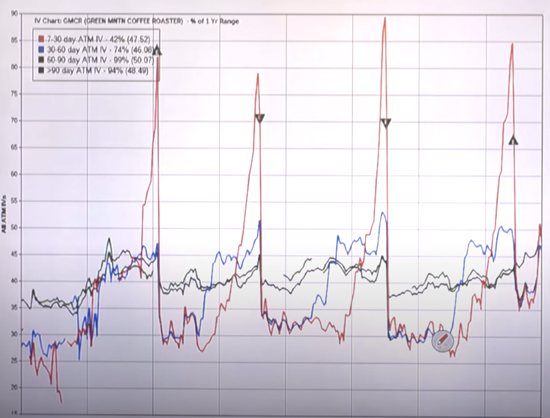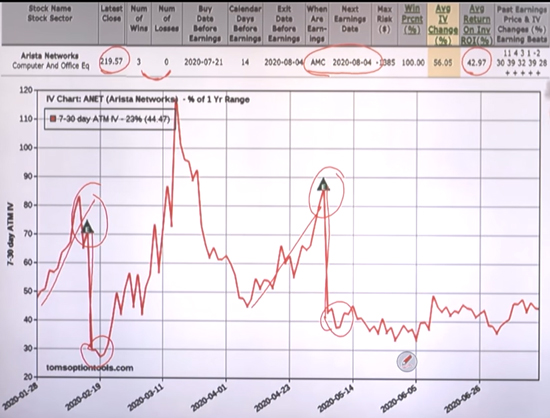We're a couple weeks into another unusual earnings season, with another month to go - and plenty more "earnings profit plays" for you to employ...
Now, I think most traders got the "shock" out of their systems last quarter, when companies announced some pretty weak numbers and, more than that, took guidance off the table for the foreseeable future.
This round, I imagine the reports will continue to be a mixed bag. The numbers could very well be better than last quarter overall - but I don't really need to bet one way or the other. The last thing I want to do is leave my hard-earned money at risk over a really uncertain outcome.
To be safe, investors can tighten up their trailing stops to prevent major losses from an earnings surprise. Like Intel Corp. (NASDAQ: INTC), falling 17% after announcing a delay in releasing new chips.
As traders, the best way to play earnings is to get in and get out before the "main event" - the earnings report itself.
Think of it like when a ticket scalper buys a block of tickets. Their tickets are much more valuable before the event actually begins. As soon as it starts, the value drops significantly. It's the same with an options contract.
When you do it right, you can double your money on earnings again and again - here's how it's done...
Hunting Down the Best Opportunities
When I was first starting out in the markets, I would buy a stock before earnings and sell it after.
Before long, I'd realized the power of options when it comes to slashing risk and using leverage to boost gains. But I was still using a pretty similar, unsophisticated strategy.
In a market like we had in the 1990s, it worked - a lot of the time. And when it didn't, I'd take the loss.
The trouble is, people are still using the same approach of buying before earnings and riding it out, all the way through. They're looking for a big gap up. Sometimes they get one, but they're always exposed to some serious downside.
There's a better, lower-risk way. Look at it this way: A scalper wants to sell his tickets right before the event starts, when the frenzy is high, when anticipation and excitement and - most importantly - demand are at their peak. That's when he can get the most money for what he's selling - just like you can get the most money for the options contract you're holding.
Finding the right stock also makes a difference. It's all about patterns. I've found a way to predict the future buying patterns of nearly every stock on the market. (And I'm using this trick to line up major payday appointments on Apple, Netflix, Google, even Amazon. You can learn more about how that works right here).
What we want to do is use a system like the Money Calendar, that looks at hard, historical data, to figure out which stocks have a history of moving - up or down - heading into their earnings.
We can look at the implied volatility (IV) chart of a stock's options.
Take Keurig Dr. Pepper Inc. (NYSE: KDP) - or Green Mountain Coffee Roasters if you're old-school... like this IV chart is:

In everyday life, implied volatility comes into play in the premium you receive or pay to sell or buy an option. As the demand for an option increases, higher implied volatility translates to higher premiums.
In the chart above, the big red spikes are the IV of shorter-term, seven- to 30-day, at-the-money (ATM) options right at earnings.
When we're looking at options, we want to see lots of these spikes, but we also want to see a good track record of return on investment (ROI).
Look at this screenshot from a video I did the other day of Arista Networks Inc. (NYSE: ANET) - it's got the full package:

But, look at those steep drops in IV that take place after earnings - that's called a "volatility crush," and it happens when implied volatility collapses quickly after "the main event." Basically the price path of the stock is kind of uncertain leading into earnings and then, when everyone has earnings information in hand, uncertainty falls, too.
If you're on the wrong side of that, you can lose money. In fact, if, as a new trader, you've ever bought a call before earnings, been correct, and then lost money, more than likely you lost it because of that drop.
As you can see in the screencap, the increase in the stock's price and the increase in the options' IV has generated an average ROI of nearly 43%.
We want to cash in on that pattern and "scalp" some profits with call options that expire just after Arista's next earnings date of Aug. 4, 2020. We want to buy those a week before Aug. 4 and sell them a few days before Aug. 4 to head off any unnecessary losses.
Do this, and you'll come out of any unpredictable and unusual earnings season on top - as we likely have more of these to come.
And remember, for more trade recommendations, learn how to join my subscribers in the Fast Fortune Club.
Follow Money Morning on Facebook and Twitter.
About the Author
Tom Gentile, options trading specialist for Money Map Press, is widely known as America's No. 1 Pattern Trader thanks to his nearly 30 years of experience spotting lucrative patterns in options trading. Tom has taught over 300,000 traders his option trading secrets in a variety of settings, including seminars and workshops. He's also a bestselling author of eight books and training courses.



